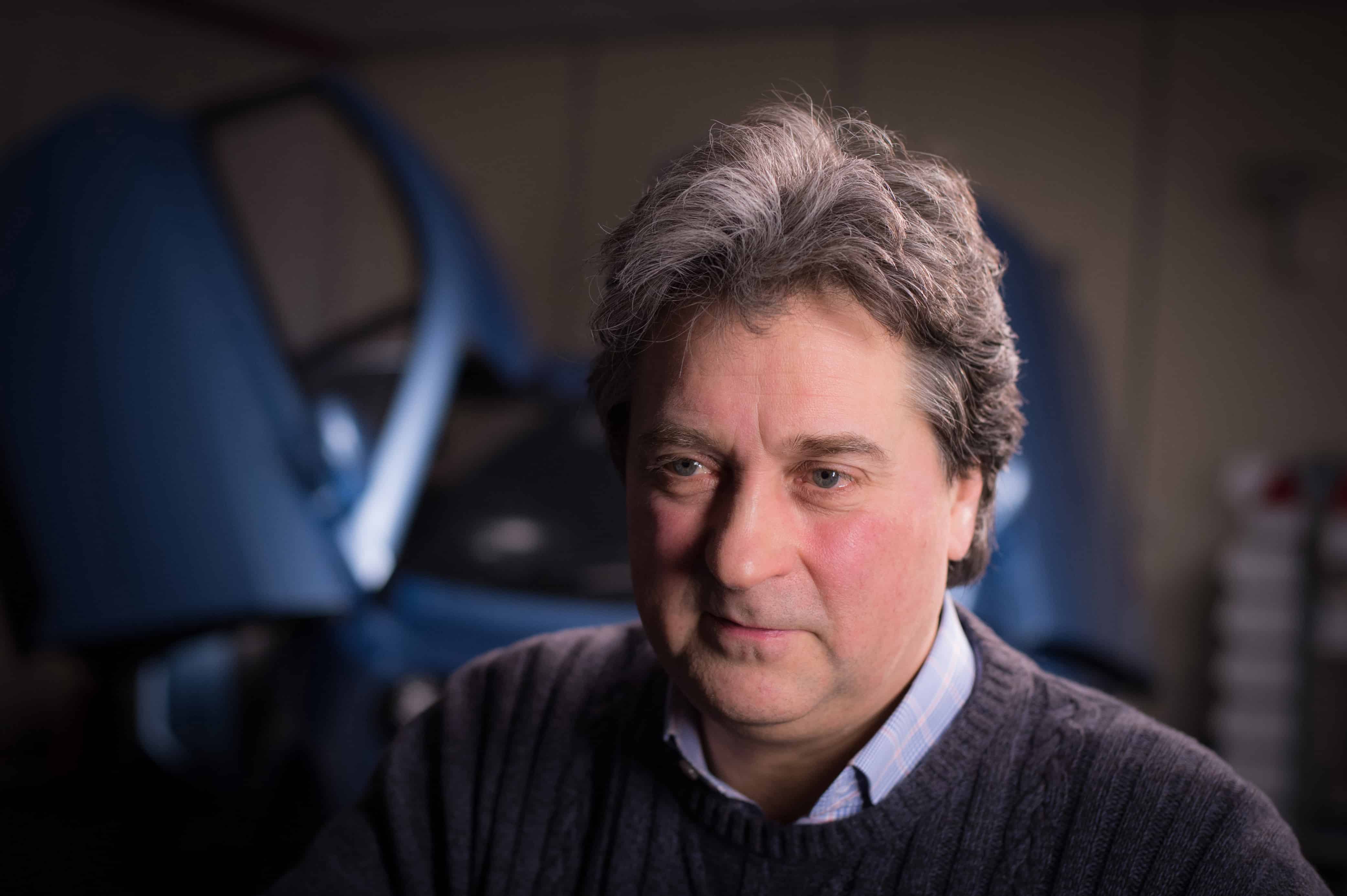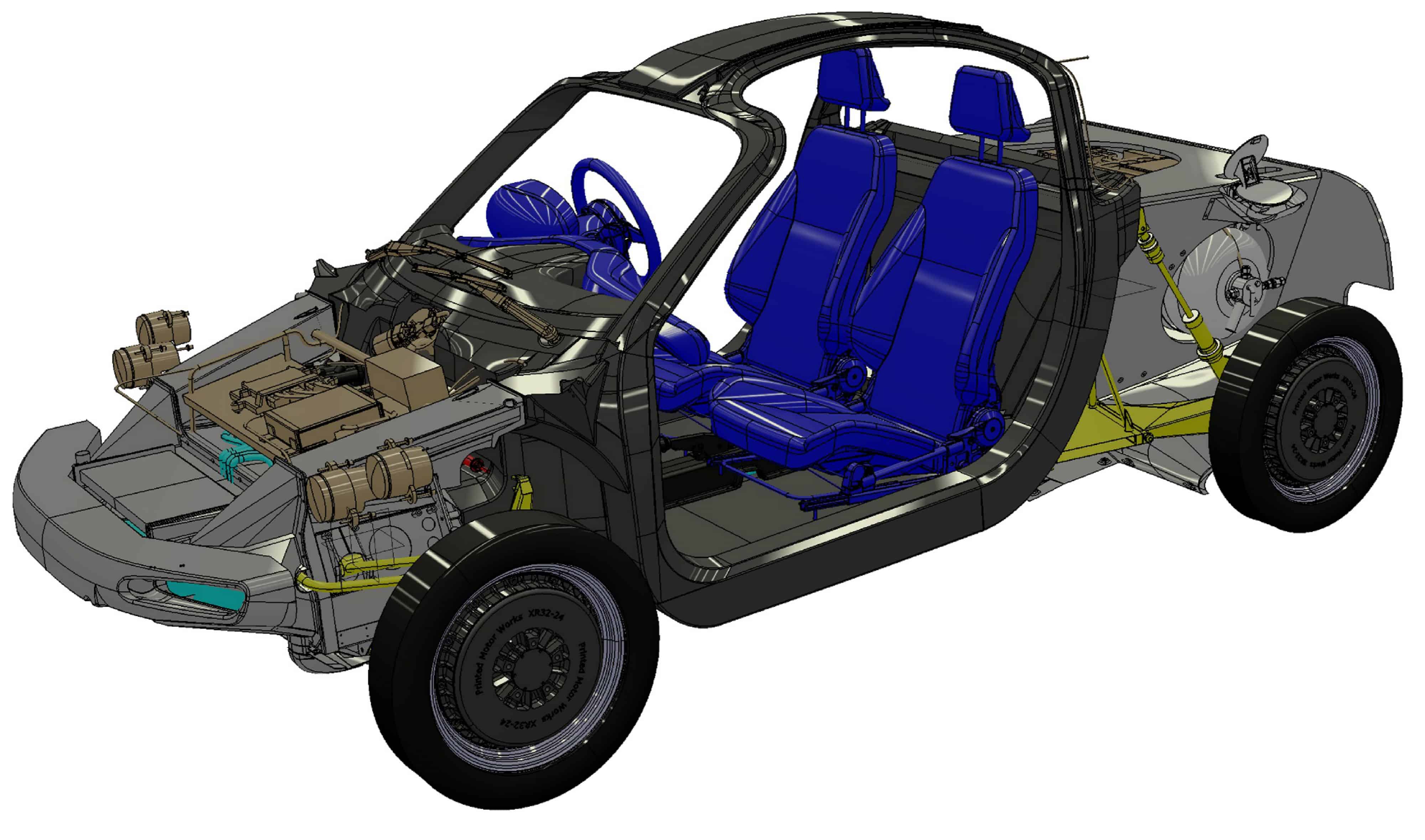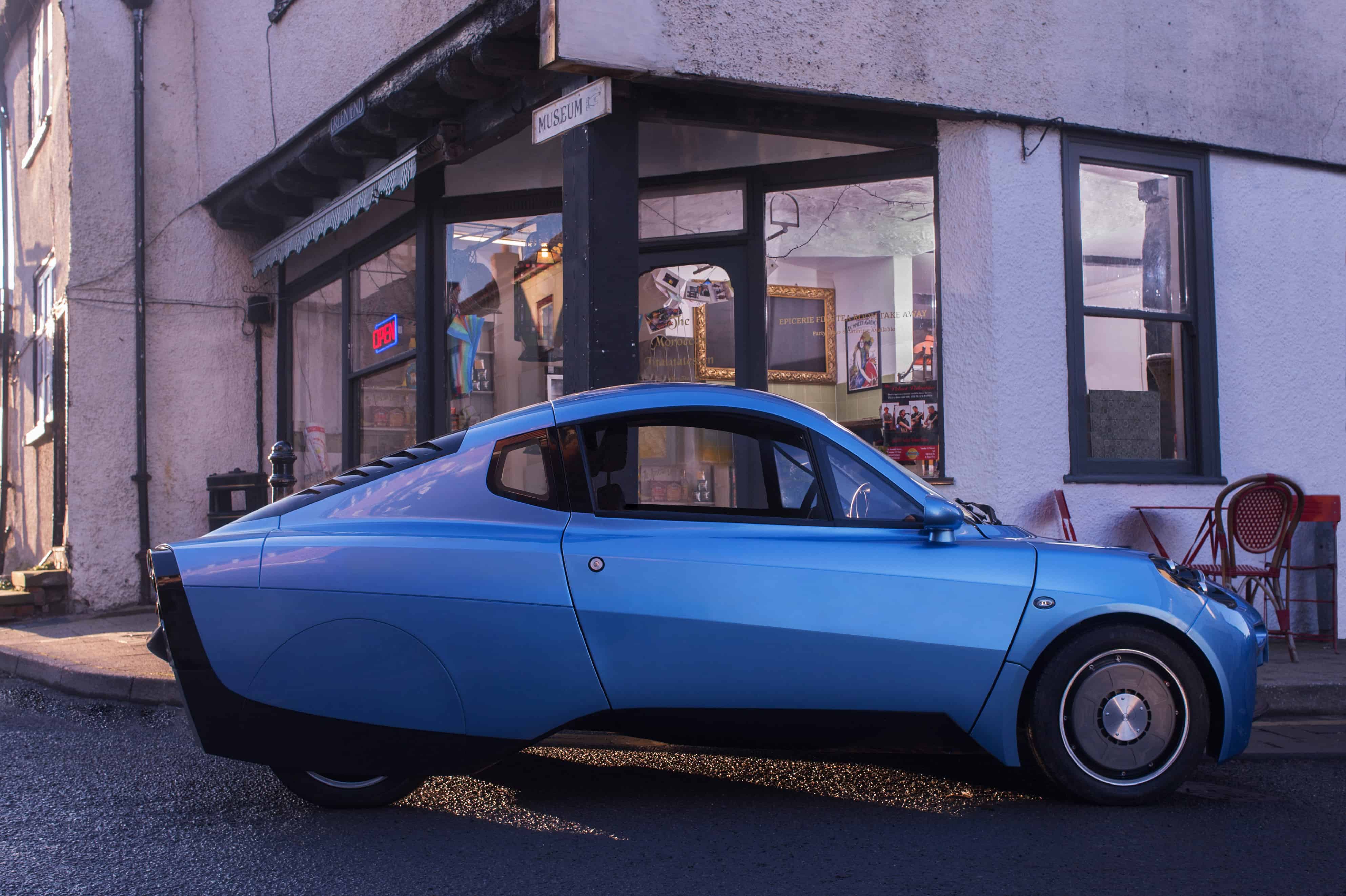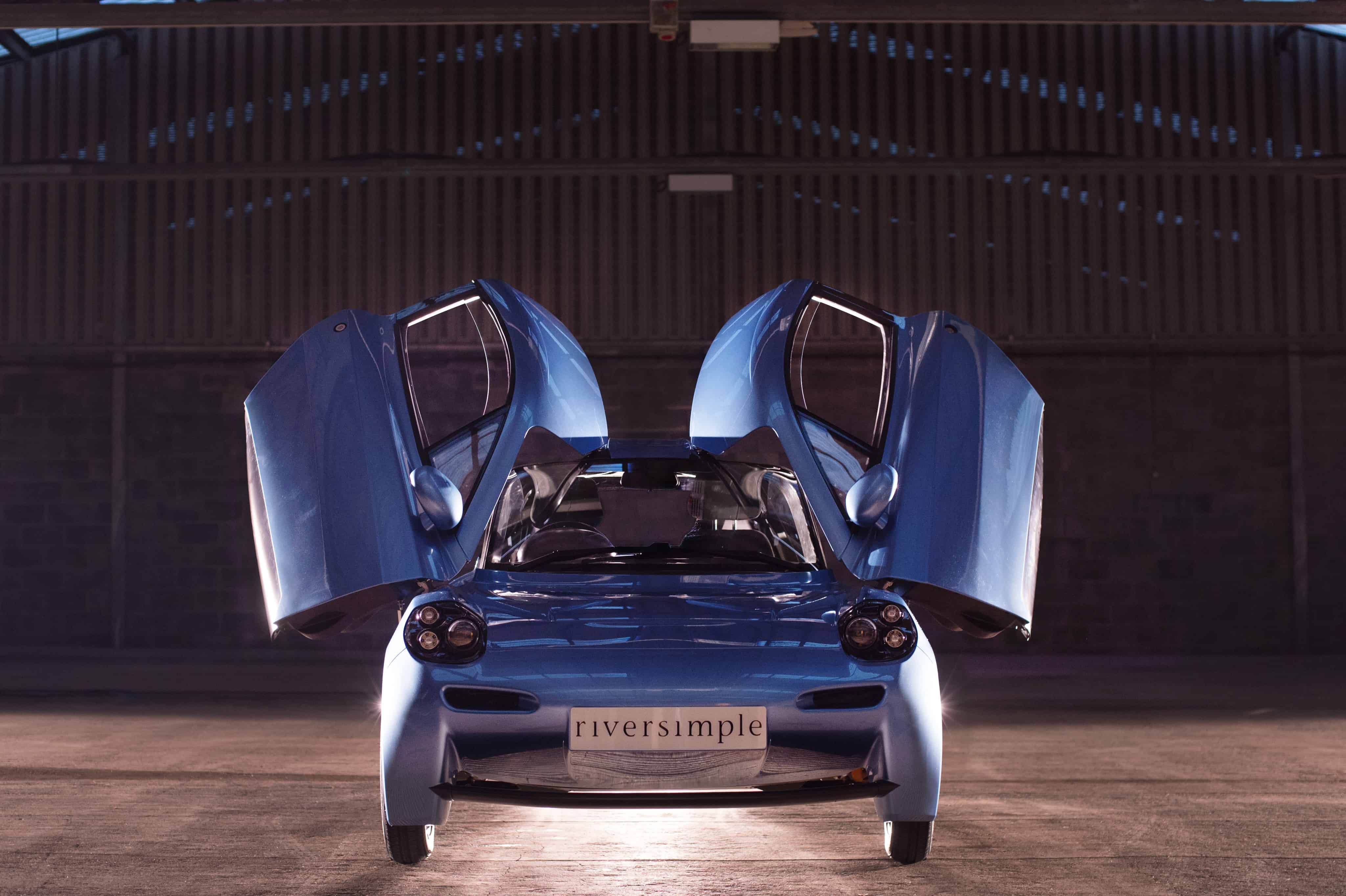Dare devil to care devil: The motor sports engineer and entrepreneur tells Jason Ford of his quest to eliminate the environmental impact of personal transport

Education
Studied engineering science at Oxford University
1998–99 MBA, Cranfield University
Career
1984–96 Founded Prowess Racing
2001 Founded OSCar Automotive, which became Riversimple in 2007
2016 Revealed first engineering prototype of the Rasa fuel cell electric vehicle
Hugo Spowers intends to manufacture 5,000 cars a year but he has no intention of selling them.
Instead, the charismatic motor sports engineer and entrepreneur proposes a sale of service model that involves the payment of a fixed monthly fee and mileage allowance in return for repairs, maintenance, insurance and fuel expenses.
This may sound like a risky strategy but Spowers is used to taking calculated risks. While at university, he was a member of the Dangerous Sports Club and was credited with undertaking the first headfirst bungee jump, as well as accompanying a grand piano fitted with skis down the slopes of St Moritz. He followed this by founding Prowess Racing, a venture that designed and built racing cars. The company also restored historic cars but, by the mid-1990s, Spowers had reached the conclusion internal combustion engines should be phased out and replaced with more environmentally benign alternatives.
“I got out, thinking that the only future for sustainable cars was better batteries, which meant basic science, big labs, big companies, big budgets,” he said. “Not my sort of world at all.
“I then found out about fuel cells… and realised that the opportunity of this hugely disruptive technology was not through focusing on the basic science of fuel cells to make better fuel cells but by putting the car together in a completely different pattern of relationships, and that is what motor sport is all about.”

Spowers went on to found Riversimple, whose aim is “to pursue, systematically, the elimination of the environmental impact of personal transport”. In keeping with this philosophy, the company undertook three major R&D and demonstrator projects that led to the Rasa FCEV (fuel cell electric vehicle), with the first engineering prototype revealed in February 2016.
Following a spring launch for Rasa, Riversimple began crowdfunding to match a €2m (£1.7m) EU grant. It also received £2m from the Welsh government in 2015 and plans to make Rasa commercially available in 2018 following a 20-car beta test performed in partnership with Monmouthshire County Council.
The car itself is a two-seat, four-wheel-drive vehicle with a ‘well-to-wheel’ emissions standard of around 40gCO2/km and zero tail-pipe emissions thanks to its hydrogen fuel cell.
Rasa maximises efficiency through a combination of lightweight composite materials and a simplified powertrain containing 18 moving parts. The vehicle’s sub-40kg carbon-composite chassis absorbs more energy per unit weight than steel in impact and its low profile helped the prototype achieve 0.224cd in wind-tunnel tests.
Once the car is on the move, hydrogen passes through a proton exchange membrane inside the 11hp, 8.5kW fuel cell, where it combines with oxygen to form water and electricity to drive electric motors mounted in each wheel, each producing 170Nm of torque at 840rpm.
When braking, the motors act as a kinetic energy recovery system (KERS) that generates electricity and replenishes Rasa’s 120 lithium hybrid super-capacitors. The capacitors deliver more than 80 per cent of the power needed during acceleration, thereby relying on the fuel cell for 20 per cent of the power and enabling it to be sized for constant cruise at 60mph.
“In a normal car, if you want better acceleration you need more power, which all comes from the engine and you end up with a higher top speed whether you like it or not,” said Spowers. “Acceleration and cruise are tightly coupled; they’re all provided by the engine. In our case, though, they’re totally independent variables.

“The decoupling of cruise and acceleration is a critical thing because it leads to the downsizing
of various components in the powertrain, and as you downsize those components you can reduce the mass of the structure. We call them mass de-compounding loops: iterative loops constantly reducing the mass, reducing the cost of components and improving fuel consumption all the time.”
Each Rasa is designed to run for 15 years and, unlike conventional volume car manufacturers, Riversimple is not looking to obsolescence and high running costs for revenue, a fact borne out in its policy not to acquire some of Rasa’s components, such as the fuel cell.
“We pay the fuel cell company for installed kW/h [because] we have a shared interest in longevity and low running costs,” said Spowers. “A fuel cell company reckons it can recover 80 per cent of the value, and that’s of much greater value to it than to anyone else. The only thing it loses is the membrane, which it incinerates to recover the platinum. It gets 100 per cent of that back.
“It can generate more revenue per stack made and it’s got a much more secure revenue stream, just as we have. It also shares the capital costs of the vehicle throughout the value network, rather than them falling on us.”

According to Spowers, an investor described Rasa as having been designed for a business model, which is in keeping with Riversimple’s aim of capturing 100 per cent of the revenue generated by the car, as opposed to the 40 per cent experienced in the volume car market, output from which has continued upwards since January 2010.
According to SMMT, the demand for new cars in the UK remained stable in May 2016 with a 2.5 per cent growth in registrations. In the alternatively fuelled market, year-on-year registrations for May also saw 2.5 per cent growth, to 203,585 units, with the government predicting 1.3 million hydrogen cars alone on the road by 2030.
The appetite for personal mobility has also led to a step change in vehicle usage with sustained growth in car club membership. More than 22,500 members use almost 700 vehicles in England and Wales, outside London.
For Spowers, this is a key market for Riversimple. He said: “In the long run, we’re not wanting to be a niche manufacturer of local cars. But [Rasa] is a local car and it’s a segment that the industry doesn’t recognise. In a resource-constrained world, we’re going to need a much more specific functional segmentation market for people to pick off different vehicle needs for appropriate power-driven technologies and fuels.”
Spowers is ready to meet the flexibility of the market through the use of low-rate manufacturing plants, which can be online in two years compared to 10 for a big plant.
“Five thousand vehicles per annum is the maximum we can get through one set of tooling,” he said. “Just as with a commercial plant, that defines the size of the assembly facility.
“When you expand, you have more sets of tooling but you don’t need to put them in the same place; there’s no economic gain. You build another small plant here and there and each one can make a different car that is relevant. It enables you to truly customise to much smaller niches.”
By Spowers’ own admission the Rasa is far from optimised, but it is highly styled (by Chris Reitz, former Alfa Romeo design director) and, according to Spowers, meets fundamental criteria of being both safe and fun to drive.
“In terms of state of the art, we’ve got nothing out of the ordinary,” he said. “There’s a lot of room for better components that could improve efficiency, the weight and so on. But the big leap forward is through the systems integration and that’s the big bite of the cherry that we’ve taken.”




Project to investigate hybrid approach to titanium manufacturing
What is this a hybrid of? Superplastic forming tends to be performed slowly as otherwise the behaviour is the hot creep that typifies hot...